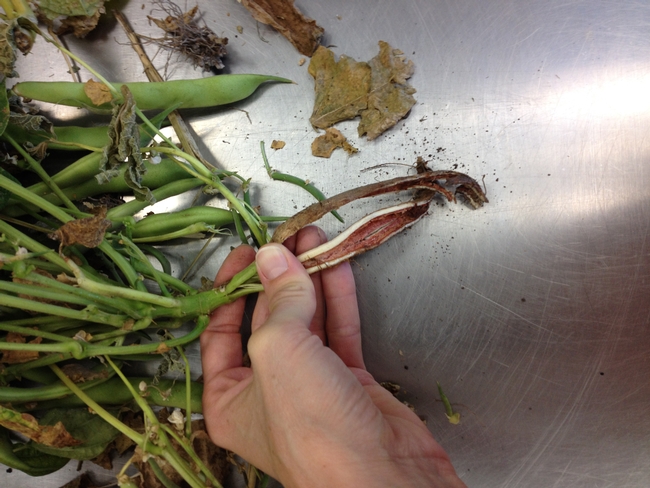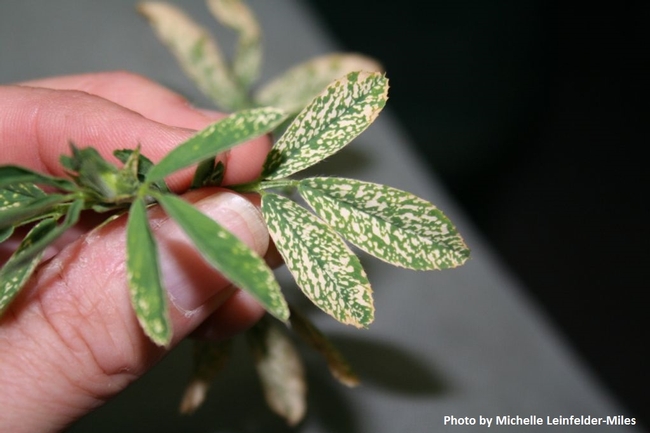- Author: Michelle Leinfelder-Miles
California agriculture is successful, in large part, because of the Mediterranean climate and irrigation infrastructure. While irrigating crops is the norm, there are growers who practice dryland, or rainfed, farming. These growers utilize winter rainfall to produce the crop.
Recently, I received an inquiry for dryland farming resources available from UC. With the help of other farm advisors, we located some resources, all of which are available online. There are two cost and return studies produced by UC Cooperative Extension and the UC Davis Agricultural and Resource Economics Department. One of the studies is for dryland safflower and the other is for dryland oat hay. The cost and return studies are intended to guide growers in preparing budgets and making production decisions based on practices that are typical for specific crops and regions of California. The UC ANR Small Grain Production Manual references rainfed systems and how they may differ from irrigated production in terms of seeding rate, fertility and tillage. Additionally, the University conducts statewide wheat and barley performance trials, and some trial locations include rainfed treatments. See the Agronomy Progress Report No. 318 for performance trial results.
- Author: Michelle Leinfelder-Miles
I was speaking with a colleague a few weeks ago about field drainage in the Delta. Our conversation reminded me of a farm visit that I made a couple of years ago. I visited a corn field that was not growing well, and sections of the field had standing water. I consulted with UC Water Management Specialist Emeritus, Terry Prichard, on what this grower could do to improve drainage. I wondered about installing drainage tiles. The irrigation specialist did not recommend installing drainage tiles in the Delta. The high organic matter soils are so fine that the perforations in the tile just plug up. He also did not recommend a deep plow because some Delta soils have a layer of “blue clay.” It is not actually clay but it is anaerobic soil (which is what makes it blue) that has never been near the surface. The irrigation specialist had once visited a field that had been deep plowed and brought up blue clay. The field became completely unmanageable.
What the irrigation specialist did recommend was to dig 4-foot (deep) drain ditches. These would run parallel to the furrows and should be about 500 feet apart. These ditches would connect to another ditch that runs to the main drain of the island. These dimensions are not a prescription for all Delta sites, but they could give landowners a general guide for managing drainage, and in the case of the corn field I visited, make wet fields farmable. Each 4-foot ditch will result in about 10 feet of “wasted” (non-farmed) space, but having these ditches (and keeping them clean) is the only way to get the water out of the soil profile and off the field.
Before any effort is put into digging ditches, it would probably be beneficial, particularly for new landowners, to see from an internet mapping interface if there are any lines in their fields that would indicate past ditches or different soil types. If previous landowners leveled the land, they may have filled in drainage ditches.
- Author: Michelle Leinfelder-Miles
In late August, I visited a kidney bean field that was exhibiting stress symptoms, like necrotic leaves and stunting. Even though the field was near harvest, the consultant asked if I would take a look at it. Upon pulling up some plants, I noticed some brick red lesions on the roots, and when I pulled the roots apart, I saw that the brick red color ran the length of the conducting tissue. This is characteristic of Fusarium root rot (Fusarium solani).
Fusarium root rot can be a problem in mid- to late- season beans but generally only when the plants are experiencing some other stress. The other stresses may include lack of moisture, too much moisture (and low oxygen), poor nutrition, or salinity. I will speak to salinity below. Fusarium root rot chlamydospores can survive in soil for years, so the UC IPM recommendations are to rotate out of beans for at least three years. While there are no resistant varieties, some varieties are more tolerant than others, so check with your seed supplier for variety recommendations.
In the case of this field, I wondered whether salinity was the stress that encouraged the Fusarium root rot. Beans are considered sensitive to salinity, with yield reductions expected when the electrical conductivity of the soil saturated paste (ECe) exceeds 1.0 dS/m or when the electrical conductivity of the seasonal average applied water exceeds 0.7 dS/m. I sampled soil from about the top eight inches and found the ECe to be 1.025 dS/m. This barely exceeds the guideline salinity target, but it indicates that salinity could have been contributing to plant stress. The crop consultant was going to follow-up by testing the irrigation water salinity. Overall, I hope that winter rains will come and leach the salts below the root zone; nevertheless, the presence of Fusarium root rot would guide me away from planting beans in this field for a few years.
- Author: Michelle Leinfelder-Miles
In late August, I was requested by a crop consultant to visit an alfalfa field in the Delta that was exhibiting symptoms like those in the picture. The leaves had little white spots near the margins, and generally, the plants had not grown well after the previous cutting. These symptoms are characteristic of potassium (K) deficiency. Delta soils are often deficient in K, so the consultant was going to follow-up with a soil nutrient test.
Fall is the season in which to address alfalfa fertilizer needs. Two nutrients that alfalfa frequently needs are phosphorus (P) and K. [Nitrogen fertilizer (N) is seldom required or profitable in alfalfa because root nodules contain N-fixing Rhizobium bacteria.] P and K should be applied between October and February because it could take 60-90 days for the crop to fully respond to fertilizer application.
A deep-rooted crop, alfalfa can scavenge nutrients from where other crops cannot, but because it has a long growing season, alfalfa has a long season of nutrient demand. Additionally, each cutting removes large amounts of nutrients with the plant tissue. Therefore, proper nutrition is important in maintaining alfalfa yield and quality year after year.
P – important for seedling vigor, root development, and early season growth – is the most commonly deficient nutrient because it can get tied up by the soil. P deficiency may be difficult to diagnose because it can be mistaken for moisture stress, but in general, plants are stunted and have smaller leaves. K is often required because large amounts of it are removed with each cutting. Additionally, sandy soils and/or soils with a long history of alfalfa production can be low in K.
Soil sampling is a reliable way to assess P and K deficiency, but tissue sampling is another way to test for deficiency. P is deficient when soil levels are 4-P (when plant samples are taken at 1/10 bloom). K is deficient when soil levels are 1/10 bloom).
Use a granule (0-45-0, 11-52-0) or liquid (10-34-0) fertilizer to correct P deficiency. These sources are the most economical. If soil or plant tissue tests show deficient levels, then apply P at a rate of 120-180 lbs P2O5/acre (if yield was around 8 tons/acre) and at a rate of 180-270 lbs P2O5/acre (if yield was around 12 tons/acre). Use muriate of potash (0-0-52) to correct K deficiency, or use potassium sulfate (0-0-52, 18% sulfur) if sulfur was also deficient. Correct K deficiency by applying it at a rate of 300-400 lbs K2O/acre (if yield was around 8 tons/acre) and at a rate of 400-600 lbs K2O/acre (if yield was around 12 tons/acre). Single applications of P should not exceed 100-150 lbs P2O5, and single applications of K should not exceed 200-300 lbs K2O. If soil or tissue tests indicate that higher rates are needed, then apply half of what is needed in late fall/early winter and the other half after the second or third cutting. Both P and K are effectively taken up by plants whether pre-plant incorporated or surface applied in established stands. Use these rates to guide your fertilizer applications – remembering that soil type, climate, and yield will influence fertilizer needs – and keep good records of all laboratory results, fertilizer applications, and crop observations. These records will be helpful in developing a long-term, economical fertilization program.
Additional information on how to soil and tissue sample, as well as tables to guide adequate nutrition, are available from this handout.
- Author: Michelle Leinfelder-Miles
Greetings! I started this blog as a component of my Extension program for field crops growers and allied industry in San Joaquin County and the greater Sacramento-San Joaquin Delta region. As a UC Cooperative Extension farm advisor, an important part of my outreach is to make farm visits when growers or consultants have observed something unusual or alarming in the field. Additionally, I answer questions over the phone or by email. All of these experiences may provide learning opportunities for a broader audience, so I will use this blog to document and archive this outreach. I will make certain to keep the identity of the parties involved private.
As is customary with blogs, please provide your feedback! I welcome comments on similar observations or follow-up questions; however, this is not a venue for advertising, so comments will be moderated. This blog provides an opportunity for us to learn from each other.



